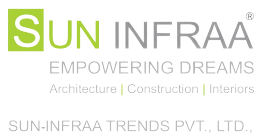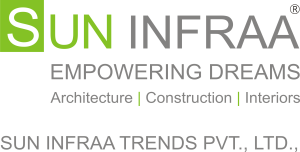Clever Ways To Add Shade For Your Passive Solar Home
In order to keep a house at an appropriate temperature for all seasons, it is necessary that the amount of sunlight admitted into each room be carefully regulated. This can be done through various passive sunshade design techniques such as orienting windows toward south-facing walls and using artificial light rather than electric fans during warm months when you’re comfortable without them!
There are many ways to provide shading in a building, such as exterior elements like overhangs and interior glare control devices. Landscape shading with low shade coefficient glass can also help reduce the level of direct sunlight received by plants on your property while still allowing some natural light through for ventilation purposes!
The angle at which the sun’s rays fall on a building orientation is mostly fixed and distinct during summer when it’s higher in degrees. In this case, an adjustable shading system can control sun heat gain while giving you more options for design with passive solar requirements satisfied by both types of elements used together or separately depending upon your needs as well as budget!
Significance Of Proper Shading Design
The best way to beat the heat is with well-designed shading blocks. These can be used during summer when it gets too hot inside your building because they reduce sunlight and therefore cooling requirements while improving natural lighting quality for indoor spaces!
Shading Methods
Given below are the various shading techniques that can be implemented in any building
The purpose of shading or solar control is to avoid overheating at times when there’s maximum heat gain and reduce cooling loads. Trees are used in this process because they provide a natural barrier against excessive sunlight that may cause uncomfortable temperatures inside your home during the summer months
The orientation of your house affects what kind of shading system works best for it. For example, an overhang is great at blocking afternoon sunlight from entering during summer but not so much if you have west-facing windows that need protection against heat in the daytime!
Diverse shading options have been employed to provide a range of comfort levels for various types.
♢ Exterior elements such as awnings, overhangs, and trellises provide comfort to the home’s residents. A variety of vertical fins keep things cool in the summer months while solar screens help with energy efficiency by blocking UV rays from entering your house at night time during hot sunny days!
♢ Some shading devices also function as reflectors, called light shelves. These pieces of glass or metal tilt away from windows to direct natural sunlight into a building’s interior for day lighting purposes.
♢ The low shading coefficient glass will reduce the heat and glare of the sun on its surface while also appearing.
♢ These interior glare control tools can be adjusted to regulate the amount of light entering your home. This will help you maintain a more comfortable living space, as well as protect that new hardwood floor from unsightly reflections on windows!
♢ Natural landscaping like trees and hedges provides a space that is hidden from view but still feels welcoming.
Implementation of Shading System
♢ Employ a variety of solar controlling means to limit the amount of radiation entering your home. For direct sunlight, use overhangs and low-E glazing for an efficient cooling system in hot weather conditions.
♢ East and west windows are the most difficult to shade because they face away from any obstruction. The best way is by installing landscaping around these panes of glass, which will provide ample cover for your house’s shadow-casting needs!
♢ The influence of shading on day lighting must be taken into account when designing a room. Light shelves will often shade lower windows, but they also bounce natural light into the room through high ones; so you need both types accounted for in your plan!
♢ In the tropics, shading of north-facing windows is not needed because they receive direct heat gain. However, in other areas shade can be useful to reduce excessive solar radiation and cooling demands on a building’s systems!
♢ The heating effect of sunlight is reduced by integrating interior shading tools like vertical louvers or Venetian blinds are a good option. These can control glare and improve visual comfort for those living spaces that have them installed in them as well!
♢ Understanding the sun’s angle is an important component of designing shading devices and placing solar panels.
♢ When considering the maintenance of shading devices at the design stage, it is important to remember that these may require considerable cleaning and repair over time.
♢ The cost of maintenance and upkeep on a landscape element should be considered when it is being used for shading.
♢ The design of a solar building is an art and it cannot be mindless, the strategies that work well for one site may not apply to another place with different needs, so carefully study other buildings while considering adopting them if they are appropriate enough in your opinion or taste!
♢ Be aware of the potential hazards posed by earthquakes and bird nesting before you decide to use exterior shading devices.
Benefits of Shading Device
The use of shading devices is particularly important in the construction and maintenance of buildings that experience high temperatures, such as barracks. Building structures that house primary businesses like offices or administration areas should consider installing these devices for optimum performance during summer months when sunlight exposure can be dangerous without proper protection against its heat source!
Conclusion
Want to incorporate effective shading for your passive solar home? Sun Infraa has an innovative and reliable approach that will work perfectly with what you’re looking to achieve. Contact us today so we can begin designing a custom solution for your ideal home!


